Book Notes: "The Art of NASA"
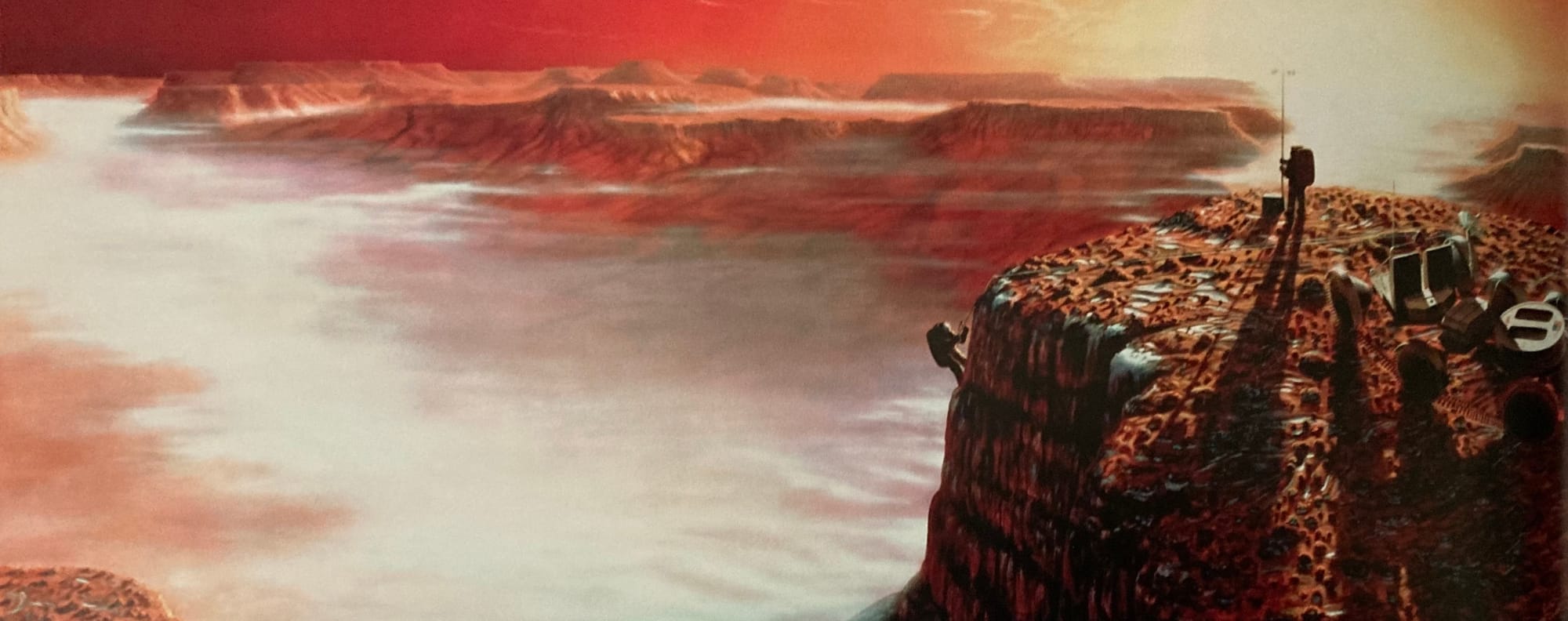
Welcome back to "Book Notes," an old series that I did way back when I was working on writing my art collection Worlds Beyond Time and was constantly churning through research materials. I'd post my favorites notes on each book along with my best attempt at photography of the most interesting images.
This time, I'm just reading art books for fun, and I can confidently recommend The Art of NASA: The Illustrations That Sold the Missions (Affiliate link), by Piers Bizony, from 2020.
Here are the artworks I was most interested in.
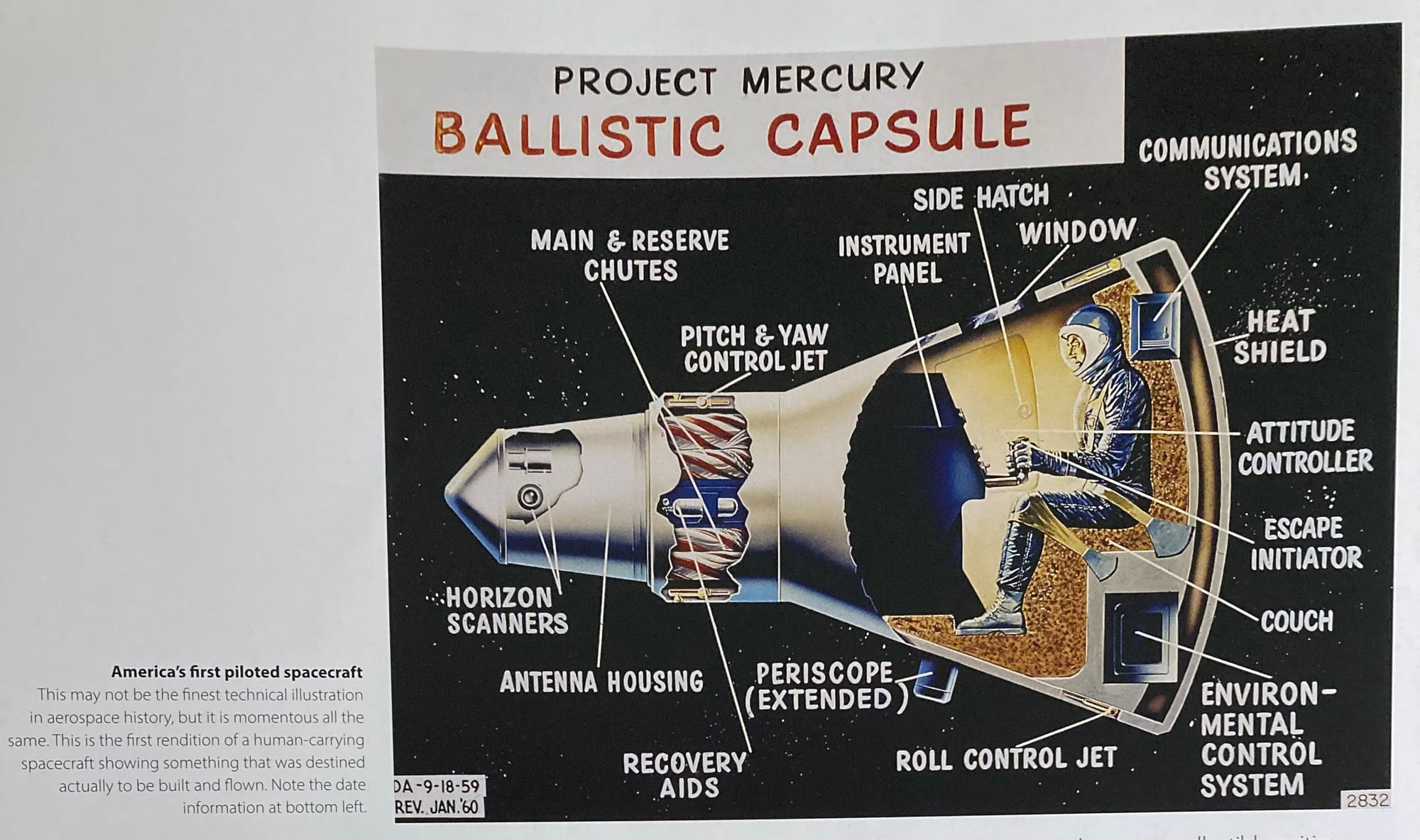
Granted, I imagine this book is particularly good for those of you who can tell your Apollo 8's from your Apollo 11's. I cannot. But I felt like I was in good hands, thanks to the detailed commentary from the author.
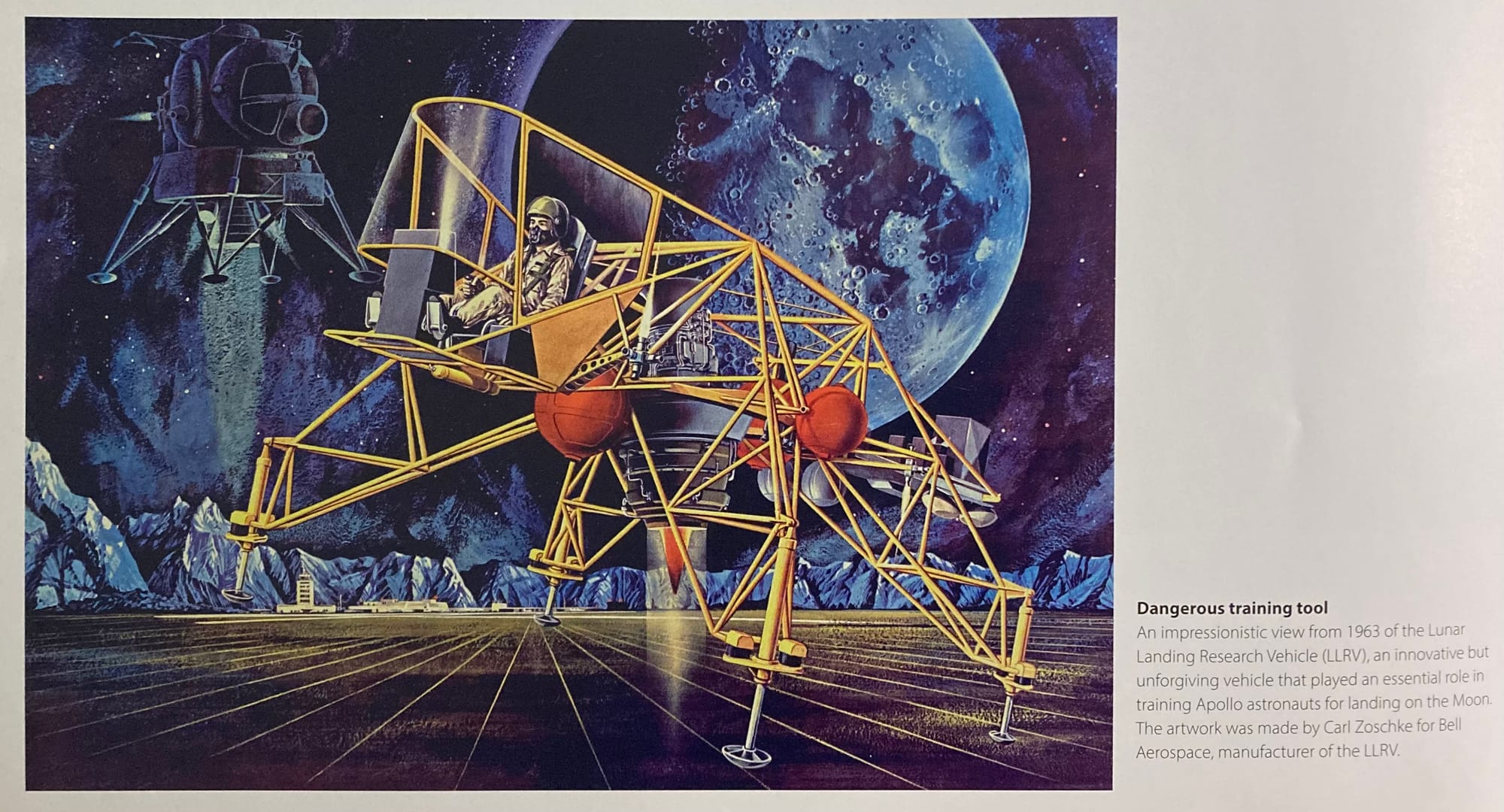
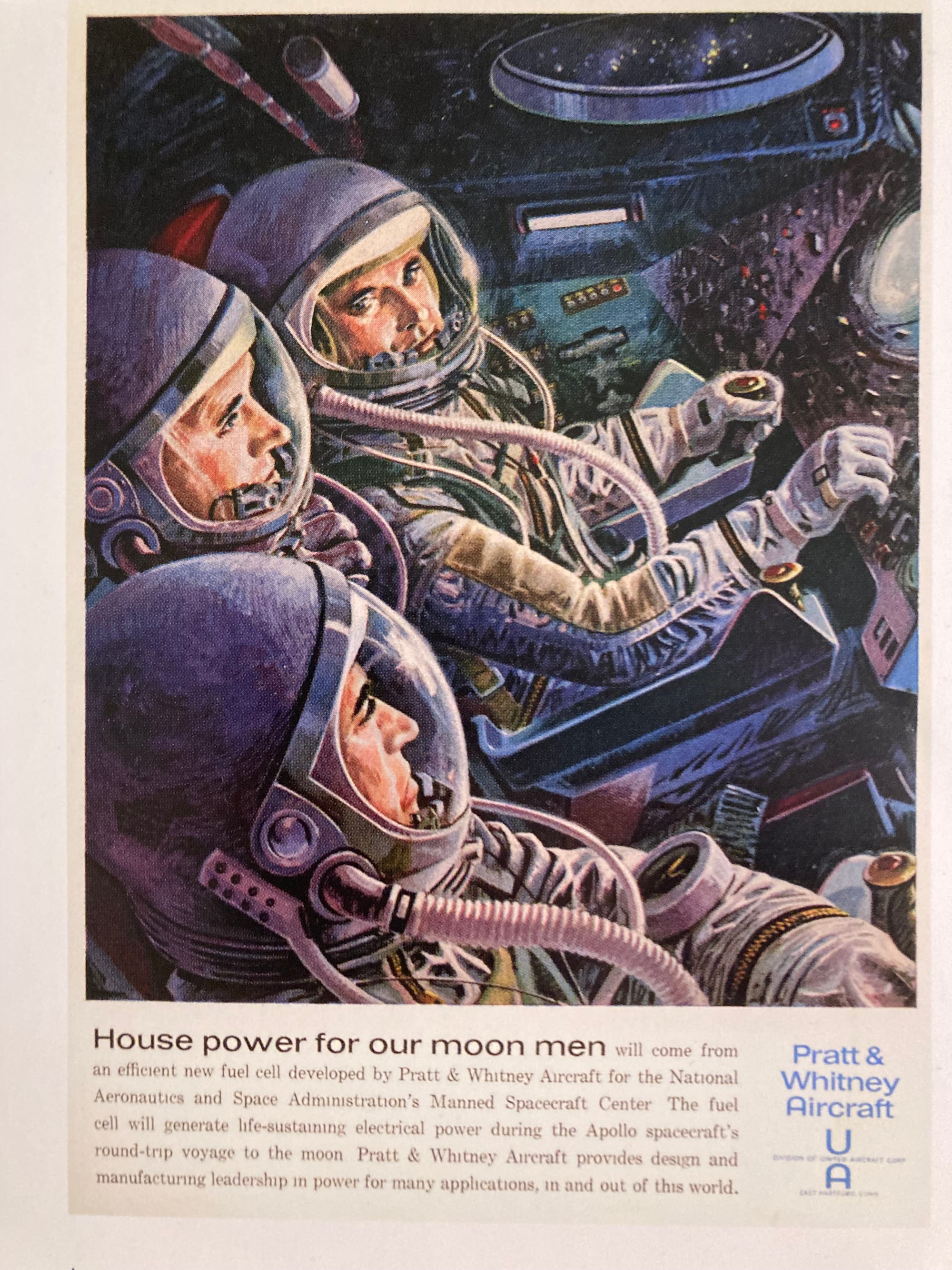
Carl Zoschke is one of the more cool artists in this book, after the big names I was already familar with, like Robert McCall and Pat Rawlings. Here's Zoschke's depiction of an Apollo lunar module taking off, complete with more vibrant colors than you'd actually see in real life.
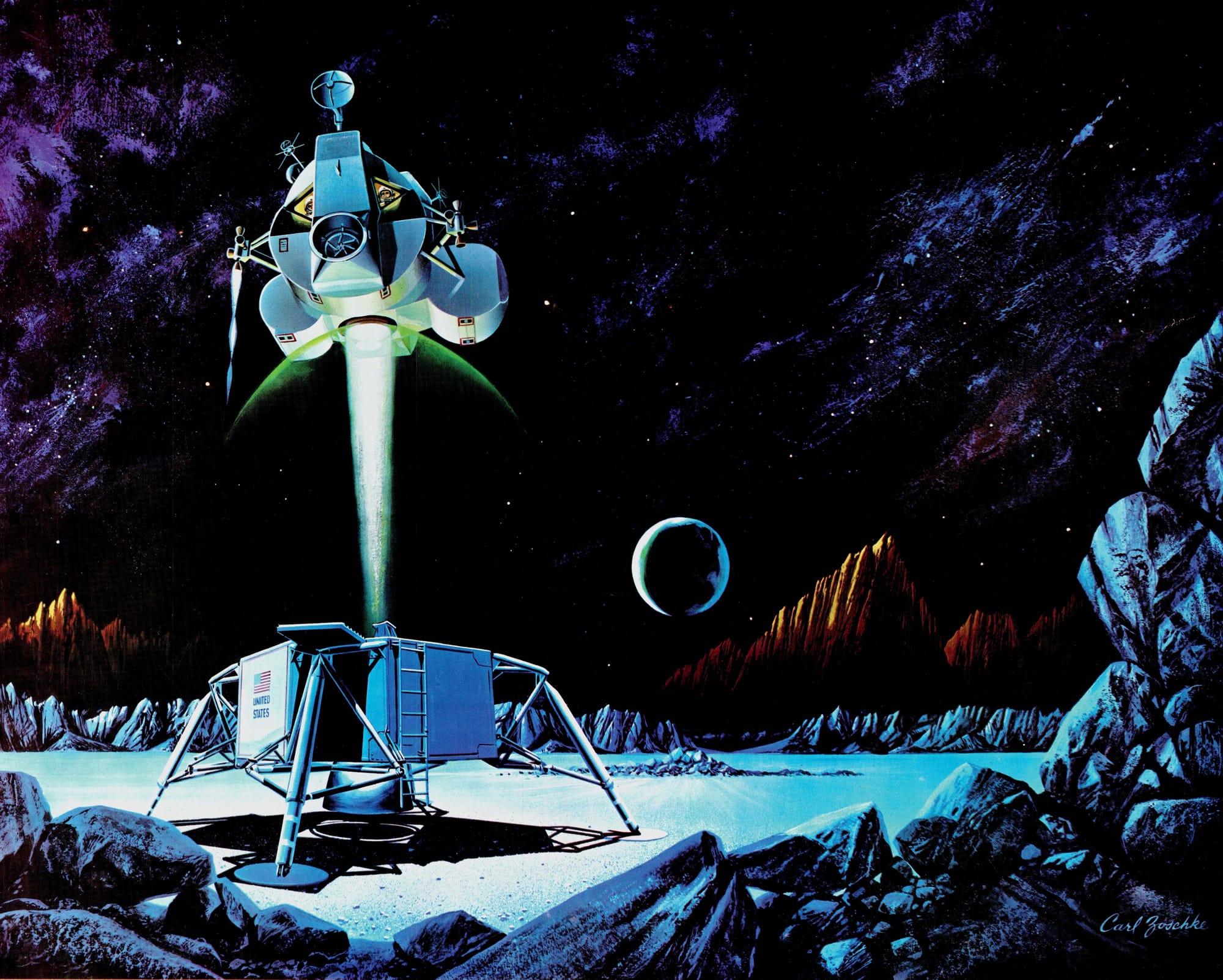
More than a few artists are unknown, like the one behind this searingly bright Apollo command module reentry.

Or this 1970 National Geographic illustration, which includes a classic element of scientific art: the cutaway.
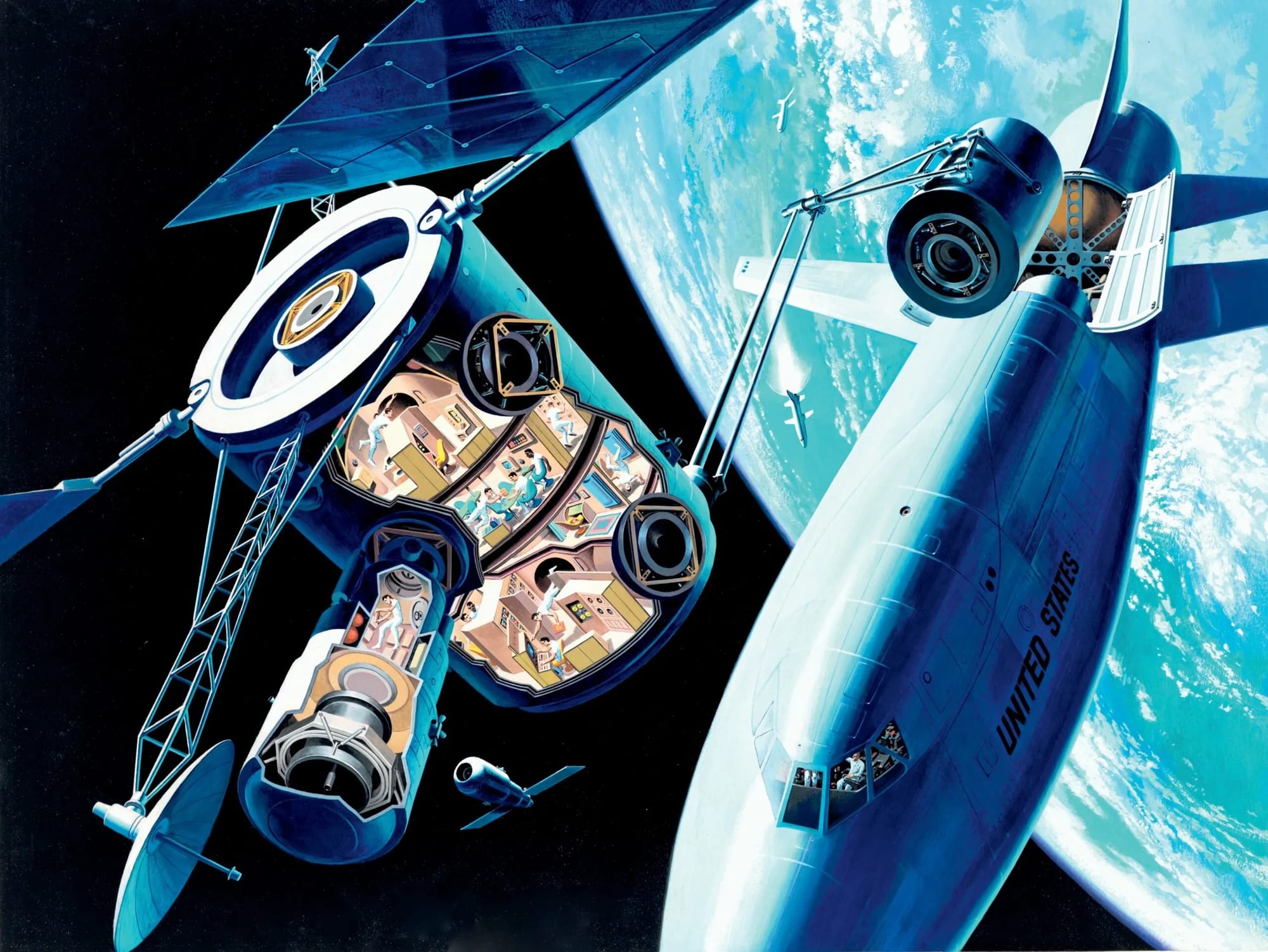
Here's Robert McCall's depiction of Edward White's 1965 spacewalk, the first by an American.

I love this uncredited illustration: Apollo 8 pulls away from the spent S-IVB stage of the Saturn V carrier rocket, during the first crewed orbit of the Moon in December 1968. The image has a beautiful blue tint that didn't really come through in my photograph.
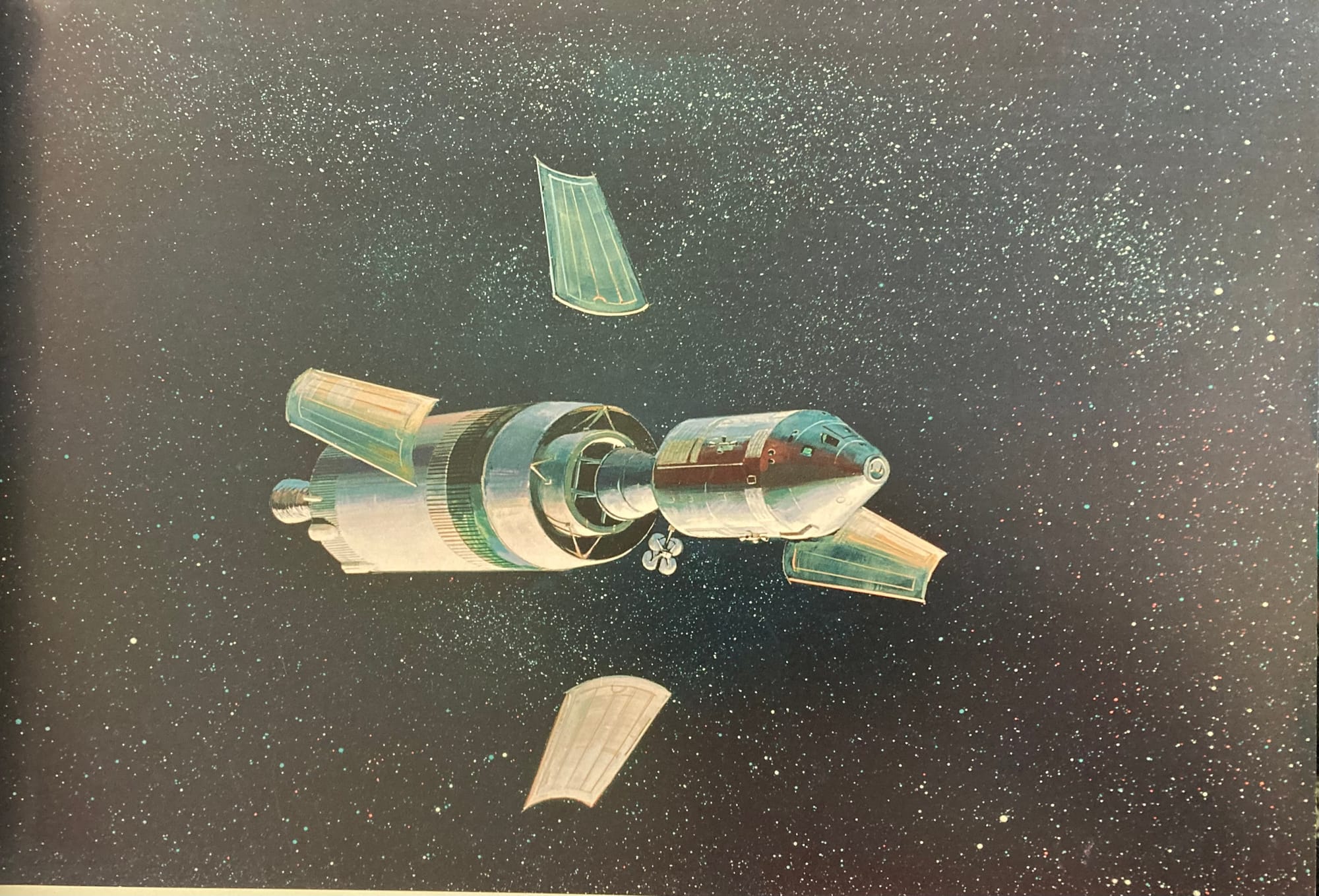
John Desatoff depicts Apollo 11's LM Eagle as it starts to touch down in the Moon.
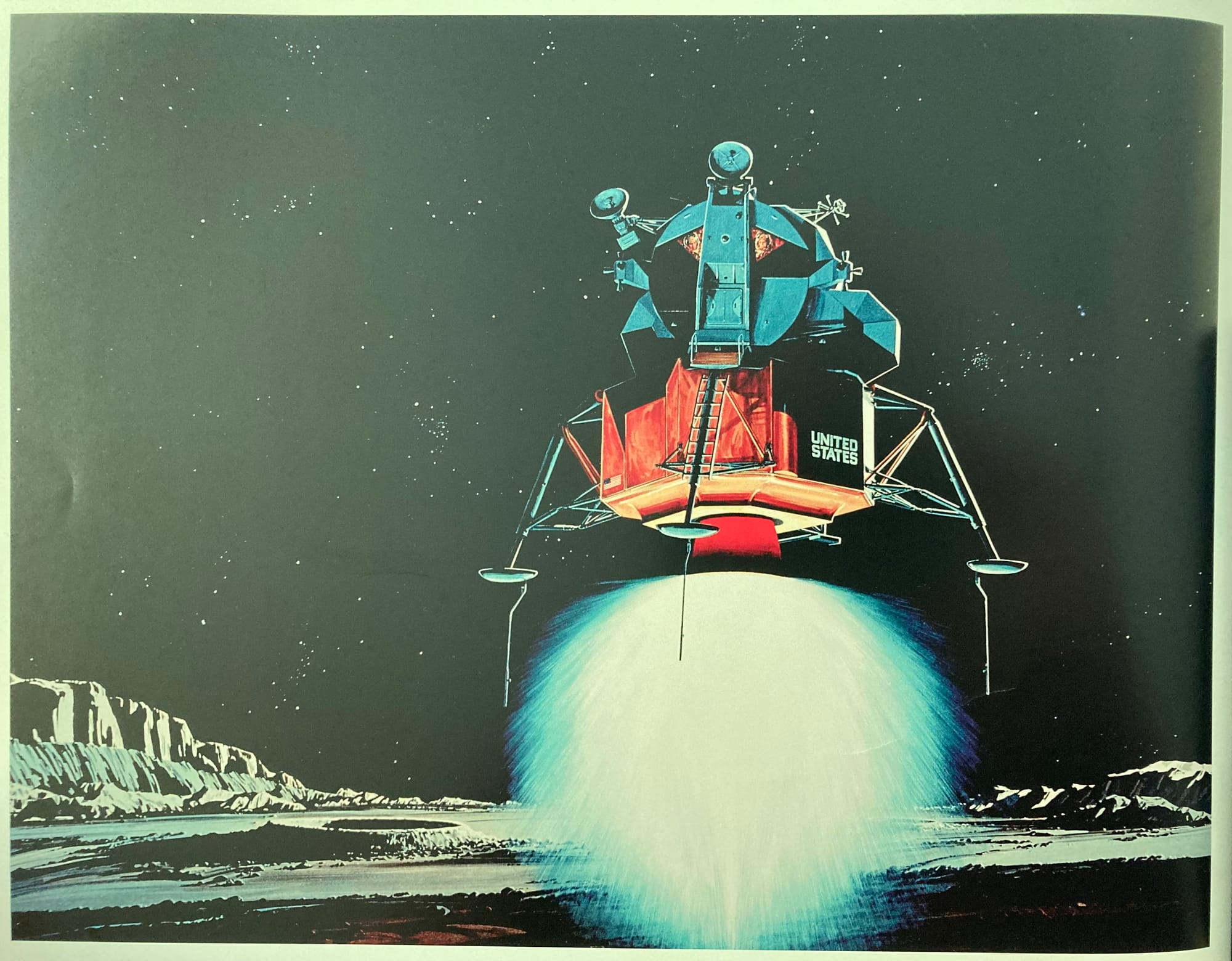
"An unidentified artist made this impressive late-1970s illustration of atmospheric friction making the underside of a shuttle orbiter glow red-hot during the most dangerous phase of reentry."

The behind-the-scenes info is the best part, as you might expect from a book focused on actual space art and concepts.
This uncredited concept is one example: "Another idea that never reached fruition was to incorporate small jet engines in a shuttle's wings in order to give the vehicle greater flexibility in its choice of landing sites."
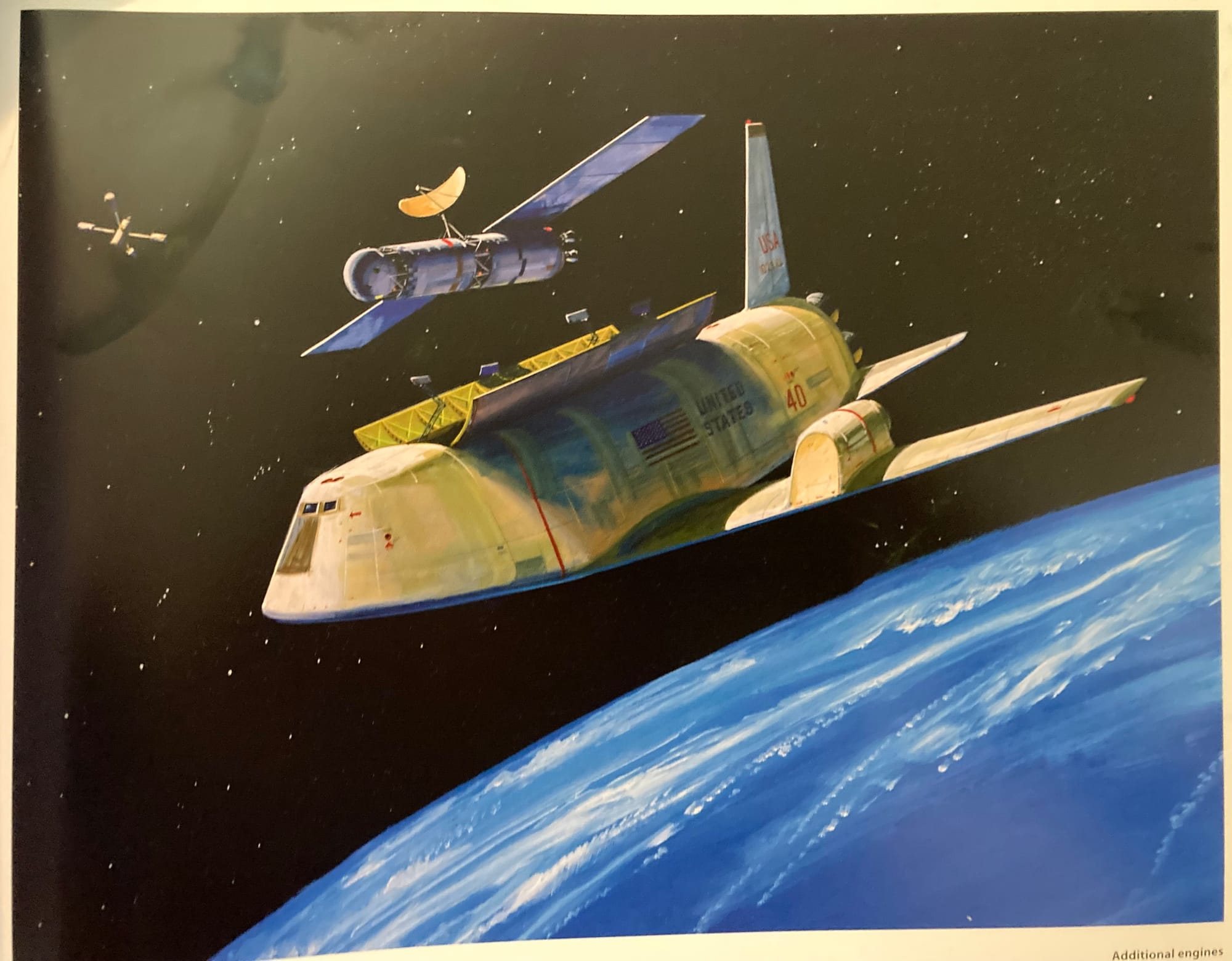
"Pat Rawlings' 1988 depiction of the first human visitors to Mars, exploring the gigantic Noctis Labyrinth canyon system. Just after sunrise, early morning fog obscures the canyon floor four miles below."
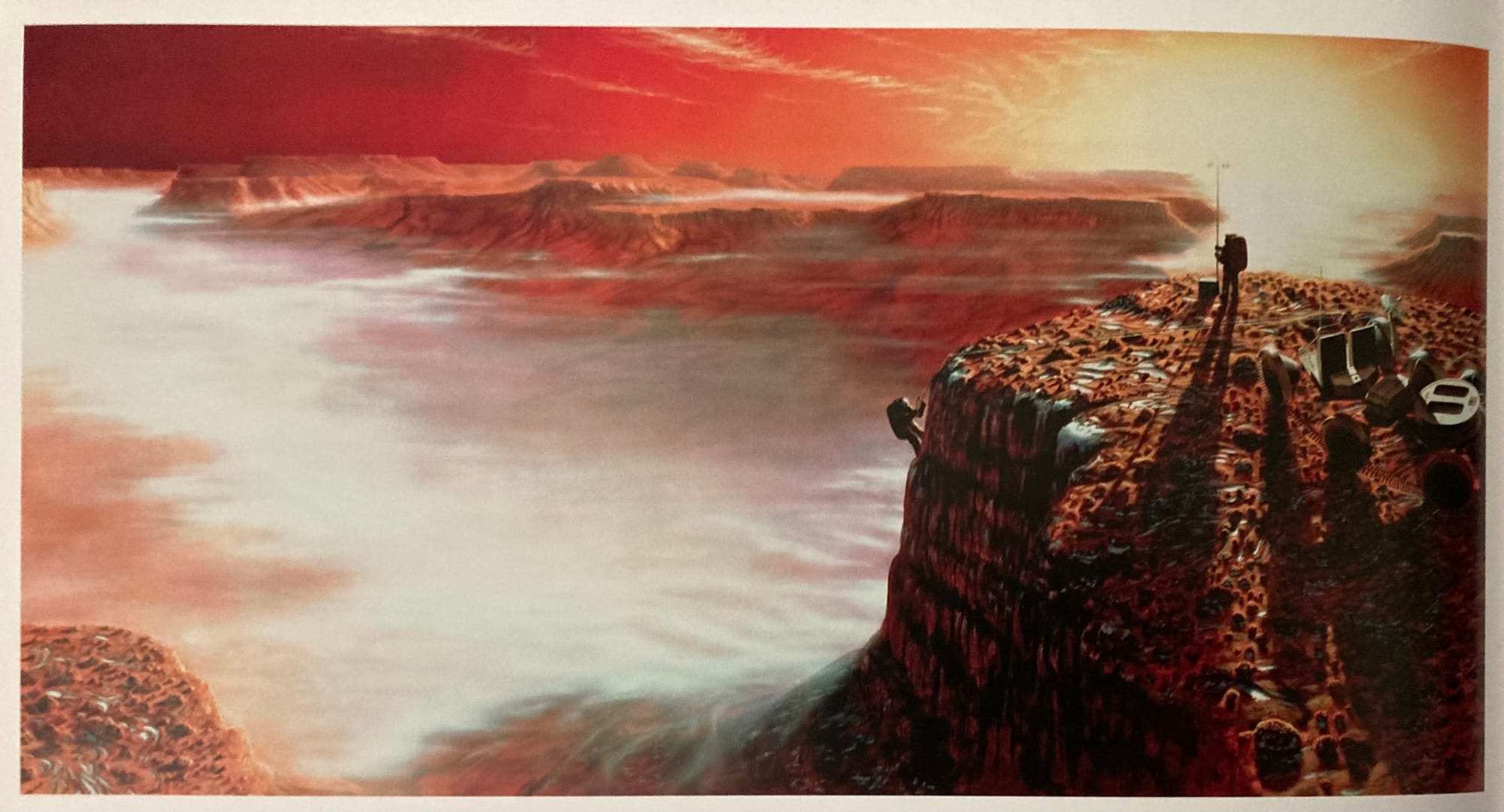
I'm biased: I mostly focused here on chapters 2 and 3, which feature much of the '60s-'90s artwork. I'm skipping the digital art entirely.
Check out the entire book if this selection of art appeals to you! It's insightful and packed full of art.
Interested in more book notes? $5/month supportors can read my very first book note post from six years back, covering The Art of John Berkey. Sign up here.
Here, have one of the weirder artworks for free: A 1978 personal work called “Astronaut in a Harem.”
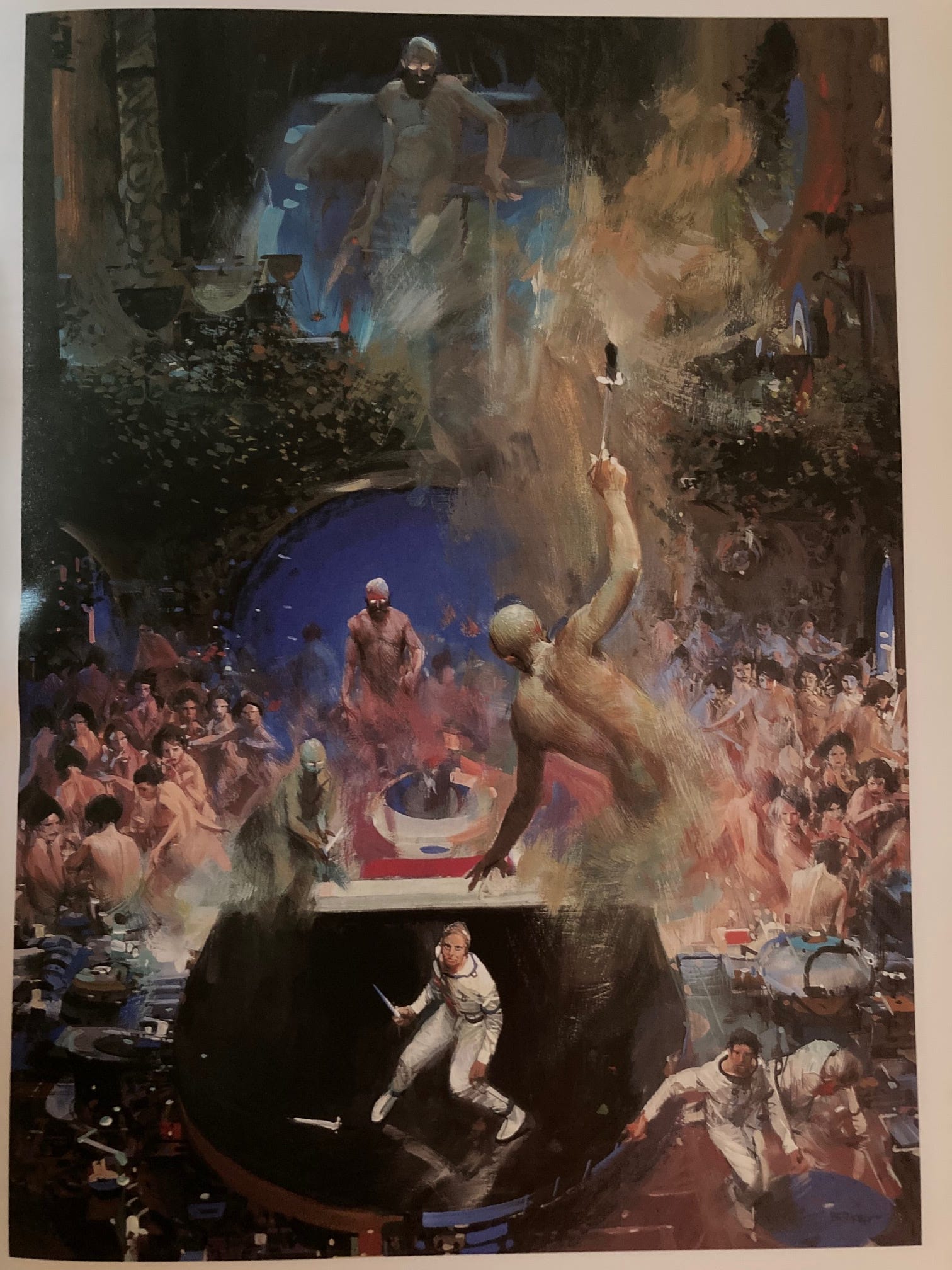
Cool Links
The Horror Comic That Started it All: Adventures into the Unknown - Into the Weird
A quick look at a classic horror comic that first debuted in 1948.
A cool blog that just interviews other people about their blogs. Yes, I love meta stuff.
Music rec: Sentinel (Single Restructure) - Mike Oldfield
Next Time: Weird Horses and Other Steeds